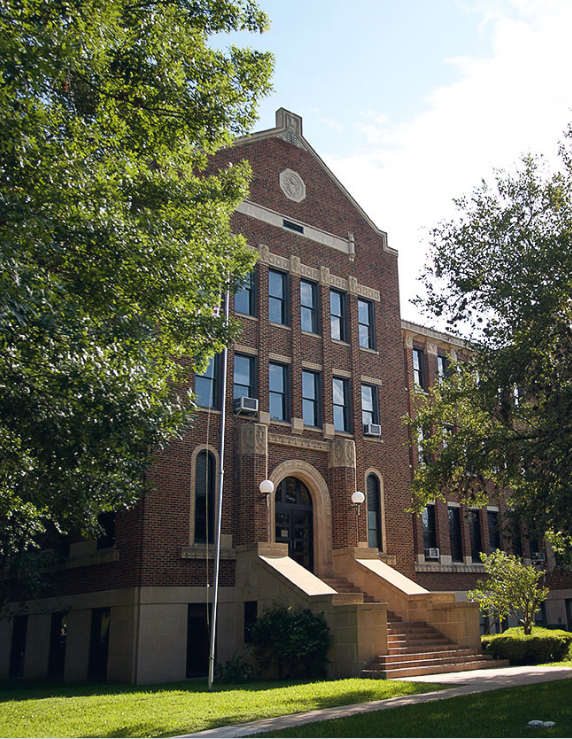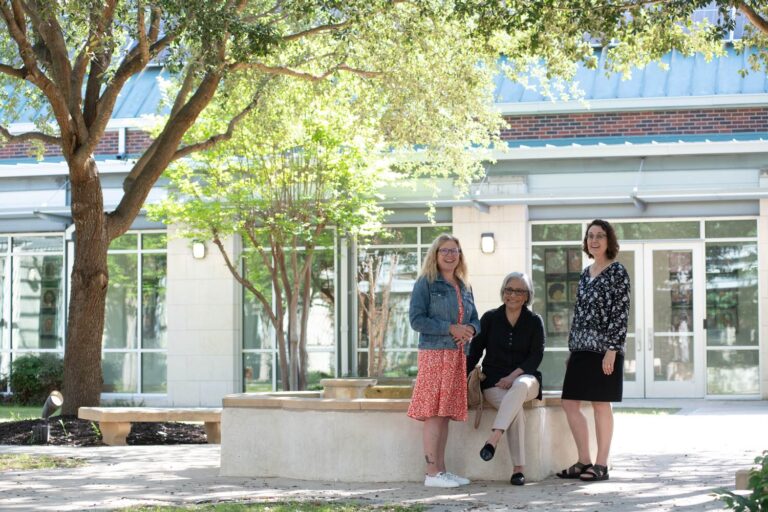Christian faith is no stranger to traumatic experiences and the reality of resilience. It is possible to say without question that Christians are resilient people. Resilience is a motivational force present within all human beings that prompts one to seek wisdom, fulfillment, and selflessness and be in harmony with inner spiritual power.[2] When mobilized, resilience helps to cope with adversity and physical and psychological pain and help recover from abuse, violent situations, different types of trauma, and bereavement. More than ever, in times of pandemic, the question of our capacity for resilience as individuals and as communities is of great concern.
Resilience is not just a psychological or sociological notion. We find the term resilience in almost all fields: scientific, technological, and artistic; from ecology to psychiatry; from politics to architecture, from literature to military strategy. The term resilience, borrowed from the field of engineering, is first found in metallurgy. According to their ability to return to their initial state after experiencing a shock or being exposed to heat and cold, we measure materials’ resilience levels. Twenty years ago, the events of September 11, 2001, generated redoubled efforts among American mental health professionals to promote collective and individual resilience.[3]
Lockdown, loss, and mourning associated with the pandemic engender angst, insecurity, and high levels of stress. What is unique about a pandemic is the invisible nature of the threat that makes us feel captive. A panoply of feelings can inhabit us: the guilt of experiencing well-being when we see the emotional devastation around us, feeling overwhelmed, losing bearings, anxiety, fear of being ill, and facing death. This reality tests the usual coping mechanisms. The more they are, the more it is necessary to mobilize new ones and be flexible concerning individual and community strategies’ effectiveness. It is a constantly re-evaluating process. Some people and institutions will find ways to manage the necessary changes well, even with emotional heaviness and a feeling of fatigue; they will find plateaus of calm in the storm. Through previous experiences or not, others will not be able to deal with trauma, especially if their coping styles are ineffective or unhealthy. The following people will struggle with finding these new coping skills; people who have had to deal with mental or emotional health issues, who have a high degree of sensitivity to anxiety, and who live with negative attitudes towards the expression of emotions. Others who possess depressive attribution or limited resistance to stress and an absence of social supports will struggle to trigger resilience.

Protestant theologian Marion Muller-Colard asserts that “our psychic and spiritual immune system in the West remains extremely fragile because the evacuation of death and vulnerability has not allowed it to “train itself” in the face of great misfortune. The experience of great misfortune, today, … isolates, marginalizes the people who go through it. These stricken people meander in a saturated space of injunction to happiness, images of success, and wander in the middle of this setting like ghosts that we do not want to see… We lack… “culture” in the event of misfortune, individually and collectively, to draw, in oneself and together, a path to cross it.[4]
It is essential to anchor ourselves in particular reflections and practices to find a path through misfortune and great trials. To do this is to see how our Christian life becomes a place of revelation of the Trinitarian presence. This article offers theological and psycho-spiritual avenues to create a culture of resilience to awaken an adequate immune response and find the spiritual muscle we so badly need in this time of trial. The act of resilience then becomes a manifestation of the presence of God.
The first path deepens our understanding of the immense potential that the theories and studies of trauma hold to shed light on our way of speaking God in the face of suffering. American theologian Shelley Rambo sees trauma studies as a way to avoid two significant pitfalls when we speak of the Triune God in the face of evil and suffering.[5] The first obstacle is denying the pain and covering it too quickly with a bandage not to let wounds surface. We need to avoid this reflex and instead let the injuries somehow breathe. It is imperative to learn to name pain and feel it without jumping into ready-made answers about the lessons we assume God wants to teach us through this pandemic. As Jesus’ invitation to Thomas reveals, we must not only put the finger but the whole hand inside the wounds of the Risen One! Remembering a crucified and bruised Jesus is an integral part of participating in the paschal joy.
The second pitfall is that of glorifying suffering, of amplifying it, and even of reveling in it: “we must carry our cross,” or “God is testing us.” The victim complex does not promote resilience. The effort to find an adjusted language, bear witness to the experience of suffering and hear it invites a way of speaking and listening to God in a dynamic encounter. As with all traumas, growth and resilience hidden in pain do not consist in total healing but of reaching a functional level that combines injury and recovery. The memory of the past and life in the present open up towards a future. In short, there is coexistence, or alternation, between the wounds of trauma and their transformations. It is a cyclical process of growth. This process is far from a linear conception of spiritual progress, quickly projecting us towards a future of well-being and healing free from difficulty. It involves the integration efforts that spur the surplus of meaning needed for a fruitful and authentic inner life.

The second path is to find inspiration from scriptures and the mystery of the Cross and the resurrection through the prism of resilience and trauma. The Bible offers a plethora of experiences of crisis and suffering: the deportation, the plunder and slavery of the Hebrews, the destruction of the Temple, the experience of exile, the persecutions, the passion of Christ, and the martyrdom of many Christians in the first centuries; they are all extreme experiences of physical, mental, and spiritual suffering that could result or did result in an excruciating death. Jesus suffered the trauma of the Cross to satisfy the goal of political and religious authorities to suppress the Christian movement by inspiring terror, shocking people by the sight of horrible and violent torture. In a sense, the Cross is the foundational trauma of Christianity. The earliest version of Mark’s gospel ended suddenly with an empty tomb, an angel announcing that the disciples would find Jesus in Galilee, and three women too scared to pass the news on to anyone. This abrupt end of the first version of Mark, which is not part of our current canon, subtly evokes the resurrection while preserving the sting of the traumatic loss of Jesus.[6]
As David Carr attests, the Bible offers images of a God who is ever-present when life shatters into a thousand pieces. According to this scholar, this is why the Jewish and Christian Bibles endure to this day. In this light, the New Testament scriptures, as texts produced in the post-resurrection tradition, are part of the early Christians’ collective resilience efforts. They tell the story of victory and hope in the face of impossibly difficult situations. This same author offers a striking analogy for speaking of the Bible. If the Bible were a person, it would be a body with metal plates welded to the bones, multiple scars, torn muscles, and an identity profoundly shaped by suffering, very unpleasant to the eye. This person would have known everyday joys but carries the wisdom of centuries of trauma, which we will all need in our lives.[7]
Certain practices can allow us to enter into a dynamic of resilience in the face of confinement, mourning, and compassion fatigue. For example, self-soothing through the restructuring of thought, physical relaxation, and the sun’s contact on our skin stimulate hormones related to calm. The practice of self-compassion by avoiding asking too much of oneself and being gentle with oneself is a solid research-based modality that stimulates resilience.[8] Other practices, such as sleep, dream interpretation, and contemplative prayer as divine therapy, affect the subconscious. The prayer of silence or centering prayer as presented by Thomas Keating (at least two 20 to 30 minutes periods per day) exposes primitive emotions and painful memories in a context of security and serenity. [9] Sleep promotes neural resilience or an “introspective perspective on life” (like therapy does) because REM sleep dissolves painful visceral emotions and helps integrate them into an autobiographical perspective.[10]
Resilience is a spiritual motivating force inherent in humans and non-humans. It does not come from a voluntary and self-sufficient act; it constitutes participation that is sometimes disarmingly simple. In a Christian context, we can articulate this participation as a grace that precedes us (prevenient or enabling grace) – it is a gift and a sign from God. We need to challenge the medical model. It is limited and limiting. Christian resilience is not about dealing with adversity with a tenacious will through quick resolution techniques or tricks; it fits into a horizon that does not even guarantee growth or a positive or visible result. This participation requires diligence and patience, and regular social support, which is a crucial determinant of resilience, especially for those infected with COVID-19.[11] Resilience is always mobilized by and in a community. It is never a force that we activate alone.[12]

Advances in the human sciences indeed make it possible to understand the dynamics and workings of resilience better. We can and should benefit from it as much as possible. Also, mystics such as Julienne of Norwich, Edith Stein, and Etty Hillesum, and many others, have lived through the loss, grief, and trauma caused by pandemics, war, and violence without resorting to resentment. They did not portray God as wanting to punish or test his people. They accepted suffering without denying or glorifying it. That is what many founders and foundresses of religious congregations have courageously done. It is also manifested by martyrs of all times and on all continents. Their testimony tells us we discover Christian resilience in and uncover it with God and, mysteriously, this resilience reveals him:
“…the Christian act of resilience turns the actor into a symbol of God’s action in the world: whether it is the German sisters on their doomed ship, Stein in her filthy cattle wagon, or any depressed or lonely patient seeking meaning in a meaningless world. These, for the Christian, must all be ways to know God, especially God at the foot of the Cross, which are expressed symbolically. In this respect the artist, poet, musician and liturgist are the ‘high-priests of resilience – for in their symbolic language the outward sign of resilience is manifest.”[13]
[1] This article continues the conversation on resilience made for a webinar series in September and October 2020 for the Canadian Religious Conference. With certain modifications, it is a translation of the original French version of “Traumatismes et résilience Chrétienne en temps de pandémie”, published in the publication En son Nom, March, 2021. The attached video interview by Sabrina Di Matteo with Fr. Renaud offers a summary of specific points: https://www.youtube.com/watch?v=4sAXMmKtQ7Q&t=184s
[2] The research by Richardson, Glenn E., has inspired this definition of resilience; “The Metatheory of Resilience and Resiliency,” dans Journal of Clinical Psychology, Vol. 58(3), 2002, p. 307–321.
[3] See Newman, Russ, “APA’S Resilience Initiative,” Professional Psychology: Research and Practice, American Psychological Association, 2005, Vol. 36, No. 3, p. 227–229 and the pamphlet The Road to Resilience: https://www.uis.edu/counselingcenter/wp-content/uploads/sites/87/2013/04/the_road_to_resilience.pdf.
[4] “Marion Muller Colard, « Ne cédons pas à la fascination du Malheur »” : Entretien recueilli par Fanny Cheyrou, La Croix l’Hebdo, https://www.la-croix.com/France/Marion-Muller-Colard-Ne-cedons-pas-fascination-malheur-2020-11-08-1201123547. All translations of the French sources are from the author.
[5] See Rambo, Shelly, Resurrecting Wounds: Living in the Afterlife of Trauma, Baylor University Press, Waco, TX, 2017 and Rambo, Shelly, “Theology After Trauma,” Christian Century, November 20, (2019): p. 22-27.
[6] Carr, David M. Holy Resilience: The Bible’s Traumatic Origins, Yale University Press, New Haven, 2014.
[7] Carr, Holy Resilience, Epilogue. p. 250, kindle version.
[8] See Neff, Kristin, Ph.D., Self-Compassion: The Proven Power of Being Kind to Yourself, William Morrow/Harper Collins, New York, 2011 and her extensive research bibliography with free PDF resources at https://self-compassion.org/
[9] Keating, Thomas, Intimacy with God: An Introduction to Centering Prayer, New York, Crossroad, 2014. See Chapter 4.
[10] See Walker, Matthew, Ph.D., Why We Sleep: Unlocking the Power of Sleep and Dreams, Scribner, New York, 2017.
[11]Shuquan, Chen & Bonanno, George, “Psychological Adjustment During the Global Outbreak of COVID-19: A Resilience Perspective”, American Psychological Association/Psychological Trauma: Theory, Research, Practice, and Policy, 2020, vol. 12, no. S1, S51-S54, https://doi.apa.org/fulltext/2020-41459-001.html, p. S52.
[12]We can find a dramatic example of the role of social ties in activating resilience in the testimony of Omar Alshogre, a Syrian dissident imprisoned and brutally tortured for 21 months in the human slaughterhouse of Saidnaya, one of Syria’s secret prisons. He survived on what he calls “the University of Whispers”; doctors and psychologists from nearby cells whisper, in a climate of forced silence, detailed instructions on caring for his injuries and adapting to torture. See Haddad, Emmanuel, “J’ai été admis à l’université de Georgetown”, La Croix l’Hebdo, Semaine du 1 janvier, 2021 : https://www.la-croix.com/Jai-ete-admis-luniversite-Georgetown-2021-01-02-1101132773. Also view the following English TEDX video: https://www.youtube.com/watch?v=d0yMq0-lHC4.
[13] Tyler, Peter, “The Science of the Cross: Edith Stein and Resilience,” in Biblical and Theological Visions of Resilience, Routledge, London & New York, 2020, p. 159-160.




 Fr. Daniel Renaud, OMI is a priest, religious and itinerant preacher with the
Fr. Daniel Renaud, OMI is a priest, religious and itinerant preacher with the